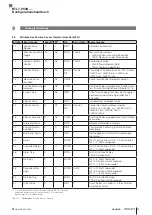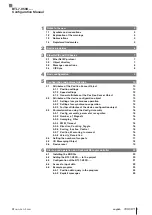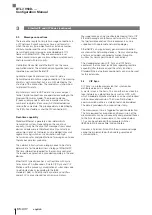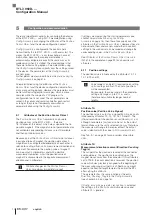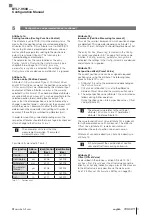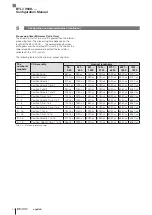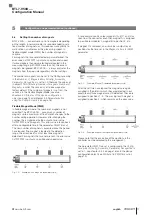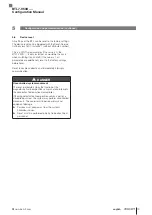
8
english
3.3
Message connections
There are either explicit or implicit message connections in
a CIP network. Explicit messages have a set format in
which the access type, object number, instance number,
attribute number and the value, if applicable, are
transmitted. Explicit messages are embedded in TCP
frames with EtherNet/IP. They are answered in a set
format. Explicit messages are transmitted asynchronously
and processed with low priority.
ControlNet, DeviceNet and EtherNet/IP use the same
application model. The established configuration tools can
therefore be used for EtherNet/IP.
Application-specific and mostly cyclical I/O data is
transmitted via implicit message connections. The meaning
of data is not transmitted, but is
implicitly
defined by the
structure of the connection. The receiver must know how
to interpret this data.
Implicit data is sent via UDP due to the more compact
format. Implicit connections are operated according to the
Producer/Consumer model. The producing device
(Producer) only sends its data once, irrespective of the
number of recipients (Consumer). All interested devices
receive the same data. The produced data is identified by
the IP-Multicast address and the CIP connection ID.
Real-time capability
Standard Ethernet is generally a non-deterministic
transmission system. Depending on the use of bus
capacity, it may be the case that messages from various
devices collide and are therefore not sent punctually or
sometimes not at all. Networks can be divided into small
segments using switches. In conjunction with high
transmission rates and prioritization of messages, collisions
thereby become less probable.
The network infrastructure no longer needs to be strictly
deterministic for the determinism strategy of EtherNet/IP.
The time information required for the real-time control of
the respective application is provided separately in the end
devices.
EtherNet/IP typically reaches a soft real-time with cycle
times around 10 milliseconds. Due to CIP Sync and CIP
Motion and the precise synchronization of subscribers due
to distributed clocks (according to the IEEE
standard 1588), sufficiently short cycle times and jitters
under 200 ns are achieved to control servo motors.
Message routing can be specifically defined so that a CIP
Ethernet package can follows a certain path. This means
that performance and real-time requirements can be
supported with appropriate network topologies.
EtherNet/IP can support every general communication
mechanism for networking devices – from cyclical polling
and time or incident-controlled activation through to
multicast or simple point-to-point connections.
The standard extensions CIP Sync and CIP Safety
counteract the functional restrictions regarding real-time
capability (jitter tolerances) and the safety functions.
Standard Ethernet network components can also be used
for this extensions.
3.4
CIP Sync
CIP Sync is a protocol extension that synchronizes
distributed clocks in a network.
A master clock is the basis. This can either be a clock in a
local network or a global time basis such as GPS, with
which worldwide branched networks can be synchronized
with nanosecond precision. The time offset between
communication partners is determined and considered.
The data is provided with a precise time stamp.
The measurement time is triggered for position detection.
The time required for evaluation and transmission of the
measurements can be subsequently compensated thanks
to the time stamp of measurement. Accuracies below
10 μs can be achieved with appropriate switches
(IEEE 588-2008 compatible) and controllers.
However, a hard real-time within the microsecond range
cannot be implemented with absolute guarantee of
synchronization.
3
EtherNet/IP and CIP basics (continued)
BTL7-V50D-…
Configuration Manual
Summary of Contents for Ethernet/IP BTL7-V50D Series
Page 1: ...BTL7 V50D Konfigurationshandbuch deutsch...
Page 2: ...www balluff com...
Page 36: ...BTL7 V50D Configuration Manual english...
Page 37: ...www balluff com...





